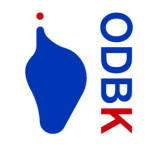By DHAdmann and Sofia Reyes
In recent years, the issue of diversity, equity, and inclusion (DEI) in museums has gained significant attention, particularly in the realm of contemporary art. This surge in awareness was catalyzed by movements such as Black Lives Matter, which shed light on systemic racism and discrimination within cultural institutions.
The conversation around DEI in museums is not new, but the urgency to address it has intensified. The underrepresentation of marginalized artists and the dominance of white male voices in exhibitions and collections have been subjects of criticism and protest letters directed at museum directors worldwide.
While the impact of the BLM movement has been felt more acutely in the United States, efforts in Europe, where the art world remains centralized, have been less visible. Nonetheless, there have been nascent initiatives signaling a shift towards greater awareness and action.
In my view, the current push for commitments in museums lacks depth and sincerity. It appears these pledges are more about optics than real change. One common commitment is to diversify museum boards, but what does that mean? Should boards have a specific mix of ethnicities? Who selects board members and how? Some museums even require hefty donations for board seats, like the $10 million demanded by the MET Museum of NYC. This raises serious questions about fairness and access. We need more than token gestures; museums must engage in genuine dialogue and action to truly embrace diversity and inclusion.
The authority wielded by museum boards, including the power to dismiss directors, underscores the need for robust regulations to prevent abuses and conflicts of interest. However, despite recommendations from organizations like the International Committee for Museums and Collections of Modern Art (CiMAM) and the International Council of Museums (ICOM), oversight and accountability remain lacking.
A 2017 report by the American Alliance of Museums exposed stark disparities in board diversity, with a significant percentage of boards comprising predominantly white members. While there is broad recognition of the importance of diversity, concrete steps toward achieving meaningful change have been slow to materialize.
As museums navigate these challenges, the question persists: can diversifying museum boards lead to greater equity, diversity, and inclusion within the art world? While the road ahead may be uncertain, one thing is clear: genuine progress requires a concerted effort to challenge entrenched power structures and amplify underrepresented voices.
In conclusion, while the journey towards a more equitable art world may be arduous, the commitment to diversify museum boards represents a crucial step forward. By embracing diversity in governance and decision-making, museums can pave the way for a future that celebrates the richness and diversity of artistic expression.

